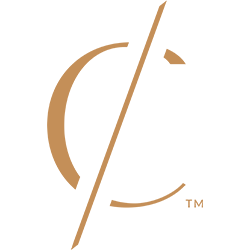STEM CELLS, PRP, PDGF & BEYOND: A GUIDE TO REGENERATIVE MEDICINE
- Ainsley Wharton
- Aug 21
- 4 min read
Regenerative aesthetics is one of the most exciting frontiers in skin health. But with so many buzzwords—stem cells, growth factors, exosomes, PRP, PDGF, PRF—it can feel overwhelming to know what each one does. The truth? They all share the same goal: to repair, restore, and rejuvenate your skin, but each works in its own way and at its own pace.
Here’s a clear breakdown:

STEM CELLS - THE BODY'S MASTER REPAIR CELLS
Stem cells are undifferentiated “builder” cells capable of becoming different cell types and signaling new tissue formation. In clinical settings, they’re often derived from fat or bone marrow, but they’re not FDA-approved for cosmetic or topical use in the U.S.
In Aesthetics:
Stem cells themselves aren’t directly injected or applied in med spas. Instead, they’re often referenced in advanced skincare marketing or mimicked through plant-based peptides and extracts in serums. They serve more as a conceptual inspiration for regenerative treatments than a practical treatment option today.
GROWTH FACTORS - THE SKIN'S MESSENGERS
Growth factors are natural proteins that signal repair. Produced by stem cells, fibroblasts, and platelets, they tell your skin to build fresh collagen, elastin, and blood vessels.
In Aesthetics:
Growth factors are found in post-procedure creams, high-end serums, or topical applications after treatments like microneedling or lasers. They accelerate recovery, improve elasticity, and support firmer, healthier skin over time.
EXOSOMES - THE COURIERS
Exosomes are nano-sized vesicles released by stem cells. They act like couriers, carrying RNA, proteins, and growth factors directly into target cells.
In Aesthetics:
Exosomes are an emerging add-on for microneedling, RF, or laser treatments. Applied topically, they boost regeneration, calm inflammation, even skin tone, create glow, and enhance healing. Research continues on their role in pigmentation, scarring, and wrinkle reduction.
They’re also making their way into cutting-edge at-home skincare through medical-grade lines like (plated) Skin Science, allowing patients to extend regenerative benefits into their daily routine.
PRP - YOUR BODY'S GROWTH FACTOR CONCENTRATE
PRP (Platelet-Rich Plasma) is made by spinning your own blood to concentrate platelets, which are then reapplied or injected to the skin. Platelets are rich in growth factors that stimulate collagen, support healing, and improve overall tissue quality. The catch - PRP results vary widely because they depend on your unique biology, age, hydration, and overall health.
In Aesthetics:
PRP is commonly used under the eyes, in the scalp for hair restoration, and alongside microneedling. However, results are variable because they depend entirely on the quality of each patient’s own plasma.
PRF - PRP'S UPGRADE
PRF is spun differently than PRP, creating a fibrin matrix that holds platelets, stem cell precursors, and white blood cells. This allows for a slower, more sustained release of growth factors. It’s considered “PRP 2.0” — but it’s still limited by what your own body can produce.
In Aesthetics:
PRF is used in tear troughs, acne scar treatments, and collagen induction therapy. It’s seen as a natural alternative to fillers in some areas and is popular among patients seeking all-natural, autologous options. However, like PRP, results are variable because they depend entirely on the quality of each patient’s own plasma.
PDGF - A TARGETED GROWTH FACTOR
PDGF is a single, targeted growth factor responsible for stimulating collagen, elastin, and vascular repair. With Ariessence™ Pure PDGF+, it’s lab-derived, sterile, and consistent — no blood draw required.
Here’s the game-changer: PDGF delivers 100,000–300,000 times the concentration of growth factors compared to PRP or PRF. That means faster, more reliable, and more powerful results.
In Aesthetics:
At Contour Collection, we use PDGF as a precision injectable under the eyes to strengthen delicate skin, smooth crepey texture, and restore brightness. It can also be applied to the scalp for hair restoration, where it reactivates follicles, fortifies thinning strands, and supports healthier regrowth. Post-microneedling, PDGF is used to accelerate healing and amplify collagen stimulation. Simply put, PDGF represents the next generation of regenerative aesthetics — exponentially stronger, more consistent, and more effective than PRP or PRF.
PUTTING IT ALL TOGETHER
Stem Cells → The builders laying the foundation for new tissue
Growth Factors → The architects designing the blueprint for repair
Exosomes → The couriers delivering those instructions where they’re needed most
PRP → Your own growth factors, but limited and variable
PRF → An upgraded version of PRP, yet still body-dependent
PDGF → The evolution of PRP/PRF: 100–300k times more potent, consistent, and clinically advanced
FINAL THOUGHTS ON REGENERATIVE MEDICINE
Stem cells, growth factors, exosomes, PRP, PDGF, and PRF all share one mission: to repair, restore, and rejuvenate skin. Each works at a different depth and pace:
At Contour Collection in Denver, we specialize in helping you navigate these options and choose the right biologic (or combination) for your skin goals. From firming delicate under-eyes with PDGF, to accelerating recovery with exosomes, to layering growth factor topicals after microneedling, we use the most advanced tools to deliver results that are natural, elevated, and timeless.
The future of aesthetics is regenerative — and it’s already here.
If you have any questions about regenerative medicine, we are here to help! You can reach us at (720) 629-8921, or you can book a New Client Consultation to learn more. We're happy to answer any questions you may have and guide you through the process.
